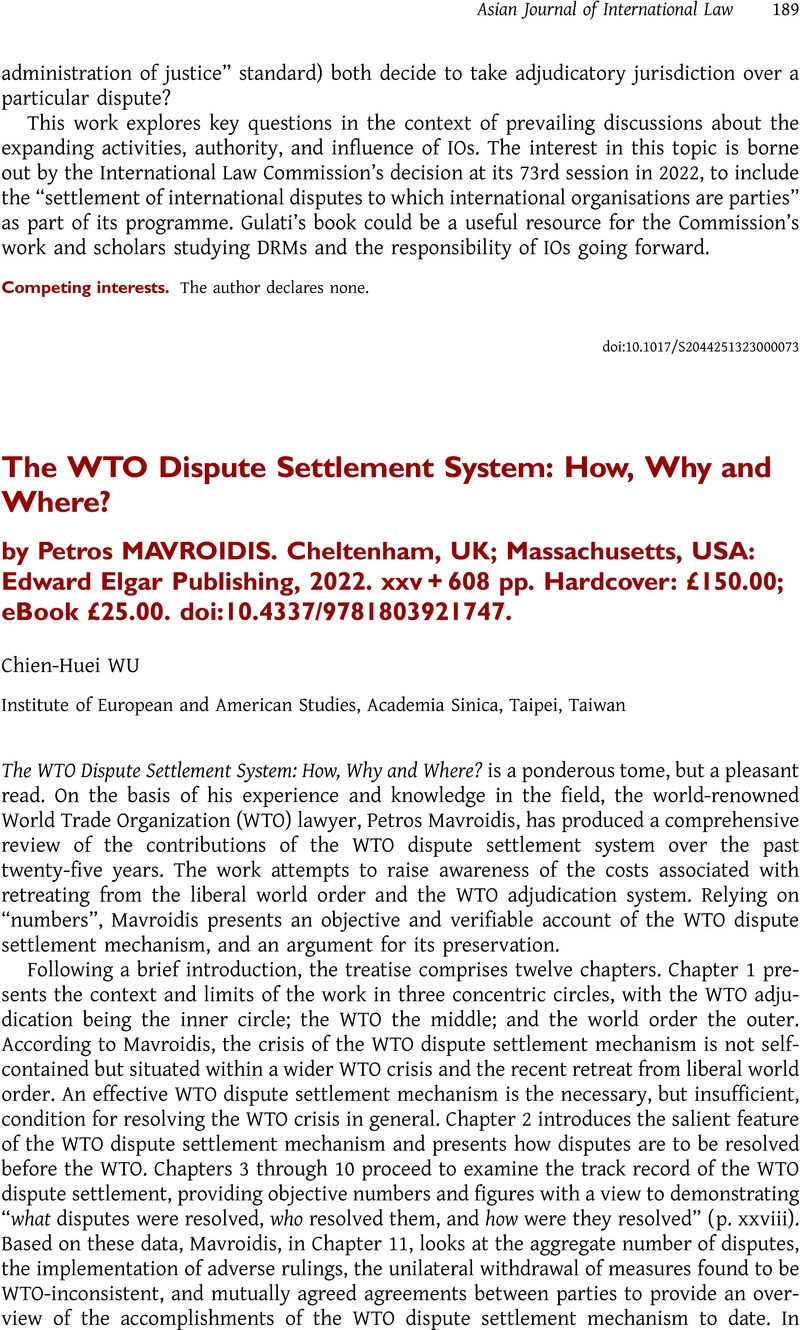No CrossRef data available.
Article contents
The WTO Dispute Settlement System: How, Why and Where? by Petros MAVROIDIS. Cheltenham, UK; Massachusetts, USA: Edward Elgar Publishing, 2022. xxv + 608 pp. Hardcover: £150.00; eBook £25.00. doi:10.4337/9781803921747.
Review products
The WTO Dispute Settlement System: How, Why and Where? by Petros MAVROIDIS. Cheltenham, UK; Massachusetts, USA: Edward Elgar Publishing, 2022. xxv + 608 pp. Hardcover: £150.00; eBook £25.00. doi:10.4337/9781803921747.
Published online by Cambridge University Press: 23 December 2022
Abstract
An abstract is not available for this content so a preview has been provided. Please use the Get access link above for information on how to access this content.

- Type
- Book Review
- Information
- Copyright
- Copyright © The Author(s), 2022. Published by Cambridge University Press on behalf of the Asian Society of International Law


